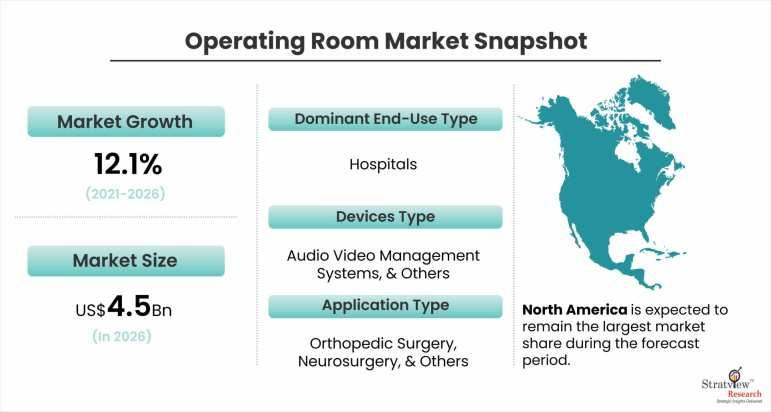"The Future of the Operating Room: Key Market Insights"
The Operating Room Market is segmented by Devices (Audio Video Management Systems, Display Systems, Documentation Management Systems), Application (General Surgery, Orthopedic Surgery, Neurosurgery, Others), End-Use (Hospitals, ASCs), and Region (North America, Europe, Asia-Pacific, and the Rest of the World).
The operating room (OR) is the heart of any hospital, and it is where surgeons perform complex procedures to treat a variety of medical conditions. However, the OR of the future will be vastly different from what we know today. With advances in technology and healthcare, the OR is poised to become a more efficient, effective, and safer environment for patients and healthcare professionals alike. Here are some key market insights that provide a glimpse into the future of the operating room.
Robotics and Artificial Intelligence (AI): Robotics and AI are already transforming the OR, and this trend is set to continue. Robotic-assisted surgery allows for more precise and accurate movements, which can reduce the risk of complications and minimize recovery times. AI can help to analyze data from patient records and suggest personalized treatment plans for better outcomes.
Minimally Invasive Surgery: Minimally invasive surgery techniques are becoming more prevalent, and this trend is set to continue. These procedures require smaller incisions, which means less scarring, less pain, and faster recovery times for patients. In addition, these techniques can be less invasive, and less risky than traditional open surgery.
Virtual Reality (VR) and Augmented Reality (AR): VR and AR are already being used in medical training, and their potential for use in the OR is enormous. Surgeons can use VR and AR to visualize patient anatomy and plan procedures ahead of time, which can reduce the risk of complications and improve outcomes. Medical students can use VR to practice procedures before performing them on real patients.
Data Analytics: Data analytics can help hospitals to identify trends and patterns in patient outcomes, which can inform future decision-making. With the use of data analytics, ORs can become more efficient and cost-effective, while also improving patient outcomes.
Telemedicine: Telemedicine has become more prevalent during the COVID-19 pandemic, and it is set to continue to grow in popularity. This technology allows doctors to consult with patients remotely, which can reduce the need for in-person consultations and allow patients to receive care from the comfort of their homes.
In conclusion, the future of the operating room is set to be exciting and transformative. With advances in technology and healthcare, the OR will become a more efficient, effective, and safer environment for patients and healthcare professionals alike. Robotics and AI, minimally invasive surgery, VR and AR, data analytics, and telemedicine are all trends that will shape the future of the OR, and hospitals that are quick to adopt these technologies will be better positioned to provide high-quality care in the years to come.
Custom Research: Stratview research offers custom research services across the sectors. In case of any custom research requirement related to market assessment, competitive benchmarking, sourcing and procurement, target screening, and others, please send your inquiry to [email protected].
